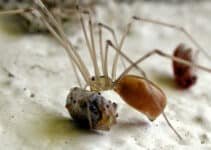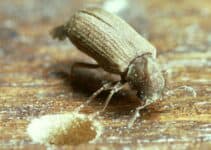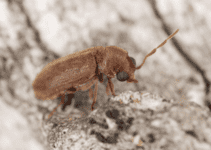As if woodworm don’t pose enough of a threat to our homes, do we now have to worry about their bite?
Well, yes and no. The thought of worms having teeth isn’t a pleasant image to consider, however, we have to understand what woodworms really are.
Let’s address that by looking at the nature of what we mean by woodworm. Woodworm is a collective term for a number of wood-boring beetle larvae that are either localised or more widespread.
In the UK the most common forms of wood-boring beetles are the common furniture beetle, the death watch beetle, the house longhorn beetle and the wood-boring weevil.
They and their larvae are collectively known as woodworm. However, it’s the larval stage that looks most like a worm and so that is what most people mean when they use the term.
But do woodworm have teeth? Yes, both the adult beetle and the larvae have teeth. But as it is really the larval stage of the lifecycle of woodworm that does the most damage, we’ll focus on them and their teeth to get a better idea of the threat those teeth pose.
Can Woodworm Bite?
Before you start having nightmares about biting woodworm, don’t panic. The larvae woodworm species will not bite humans.
At a maximum length of 6mm and mouths so tiny you’d need a magnifier to see them, they wouldn’t pose much of a threat. But put simply, they don’t bite us because we are not their preferred food.
Neither are we a recognised predator, so they will not defend themselves through biting.
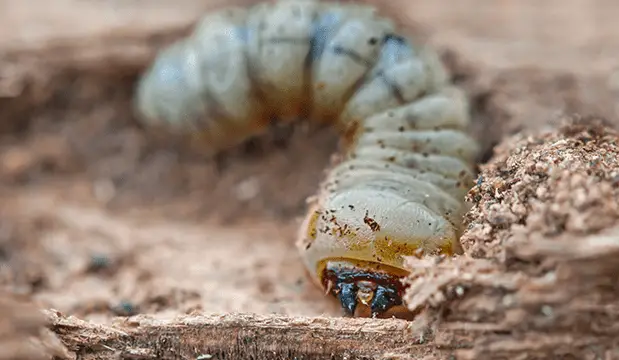
That is not to say there are no health risks associated with woodworm. But the only health risks posed by woodworm to humans is through the parasite that predates on woodworm larvae and can be present if you have an active woodworm infestation in your home.
You can read more about that threat in our article here.
Do Woodworm Bite through Wood?
Woodworm Larvae Teeth
For most species of wood-boring beetle, their larvae do have toothed mouthparts. The larvae do not have a mouth in the human sense but their mandibles are toothed and the teeth are triangular in shape.
This makes it easier for them to detach tiny pieces of wood from the timber mass. They do not chew with these teeth as such, though. The wood pieces are brushed into the mouth cavity by the other mouthparts.
Woodworm larvae ingest wood and not other materials like paper. But it is the cellulose in the wood that is their main diet. And because cellulose is indigestible to most insects like spiders, the larvae rely on the micro-organisms within their gut to process it.
This is thought to be why woodworm prefer sapwood to heartwood as there may be more residual sugars and proteins in sapwood which helps them grow.
Heartwood is much less likely to attract woodworm because it has more potentially toxic chemicals that have been deposited during the tree’s growth. It is also possibly why woodworm’s preferred habitat is in the wild, in decaying trees or rotten wood.
But it is because woodworm are able to eat timber that is toxic to other insects or organisms that make it the nuisance that it is.
When the wood is passed through the digestion of woodworm, it is deposited behind as the larvae continue tunnelling. This mixture of wood and faecal pellets is called frass and is one of the tell-tale signs of a woodworm infestation in the home.
Woodworm Beetle Teeth
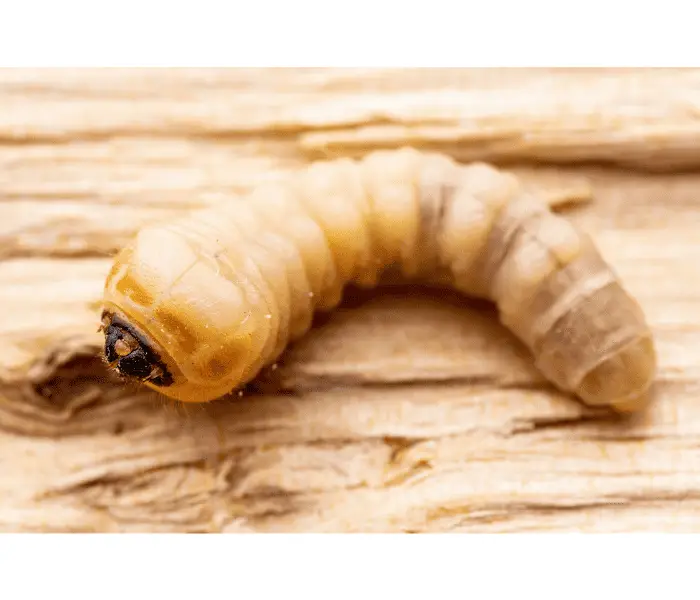
Adult beetles, as we have said, also have teeth. After pupation near the surface of the wood, an adult beetle will bite through the surface of the wood to fly to its mating and egg-laying site.
Again, their teeth are only for the purposes of exiting the wood in order to mate. It is these final exit holes that are the most recognised sign of woodworm.
Once they reach the adult stage of their life cycle, woodworm do not feed. And as they only live in adult form in order to mate and, in the female’s case, lay eggs, their teeth become obsolete.
They have not been known to bite humans, or if they have no health-related issues have been caused as a result.
So, as you can see, woodworm are a threat to your timber but not particularly to you. And you can sleep easier knowing that woodworm larvae are not interested in biting you, they are only after your wooden furniture.
